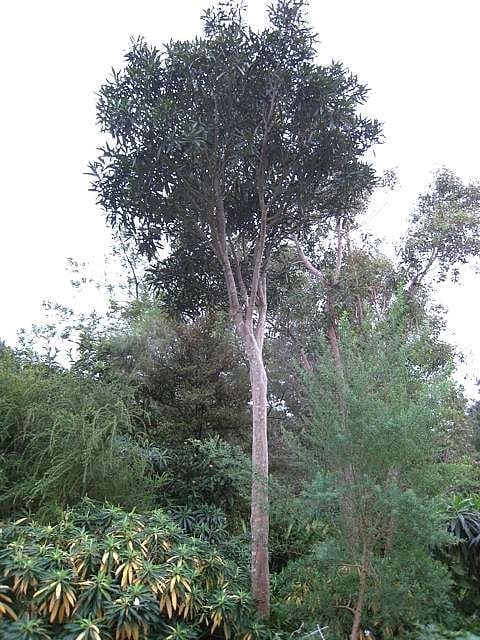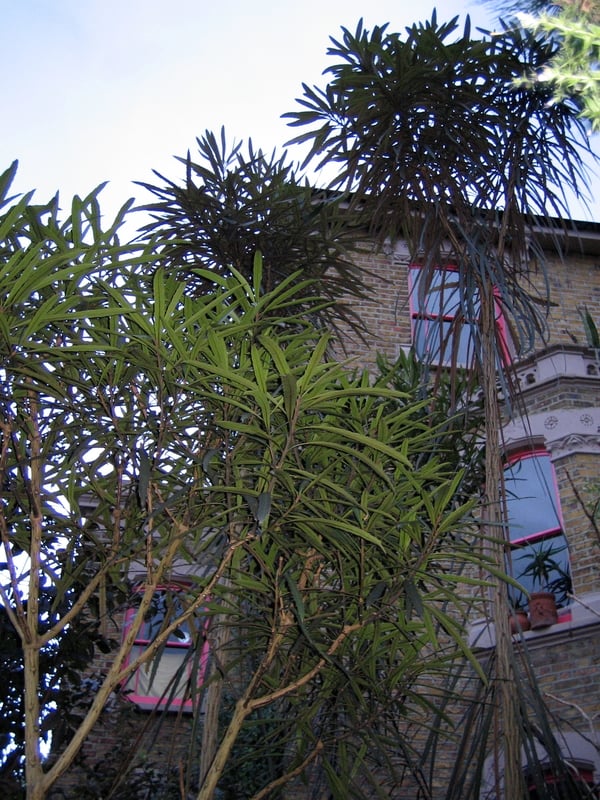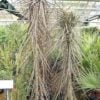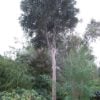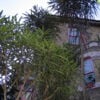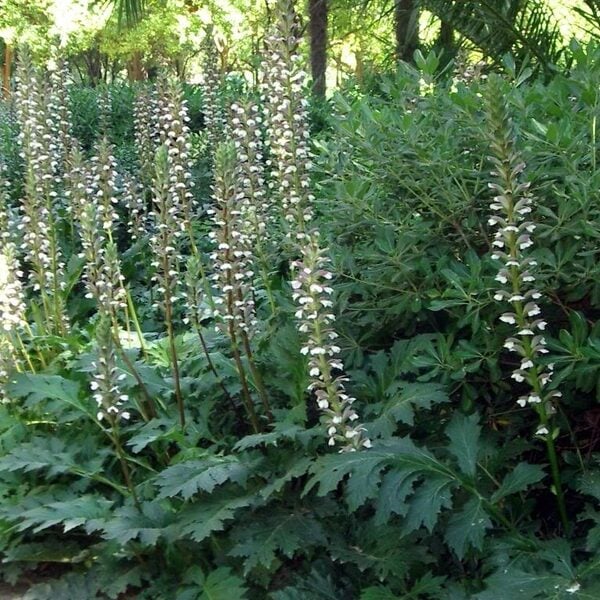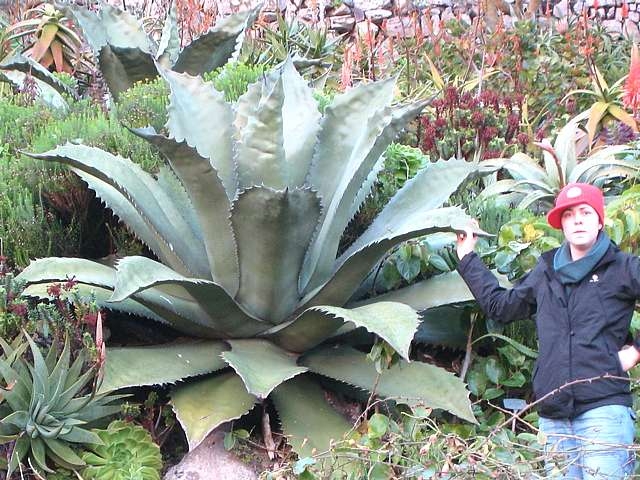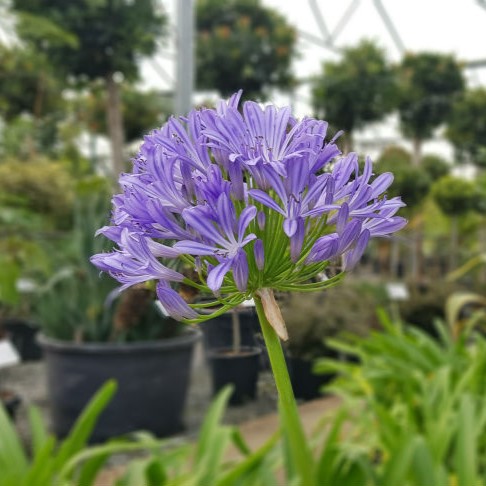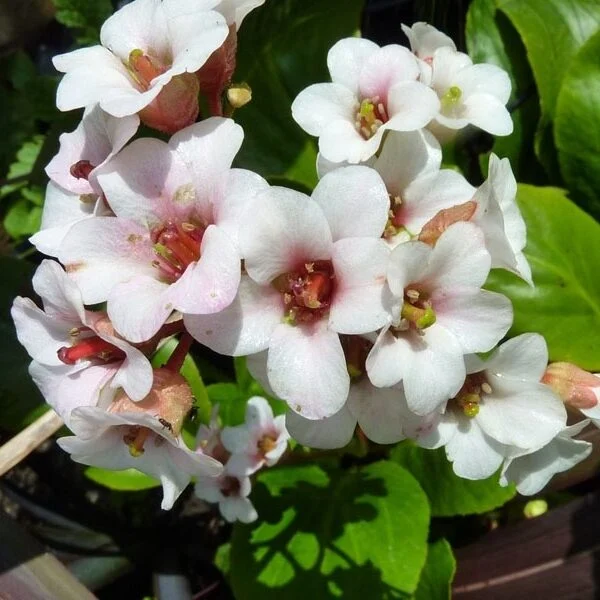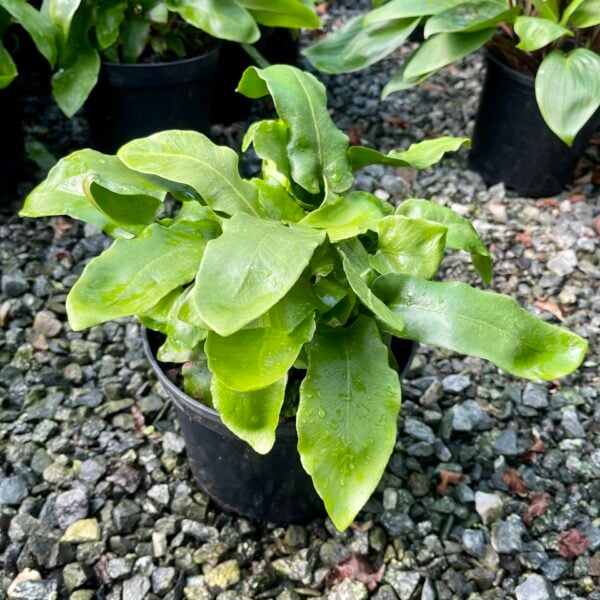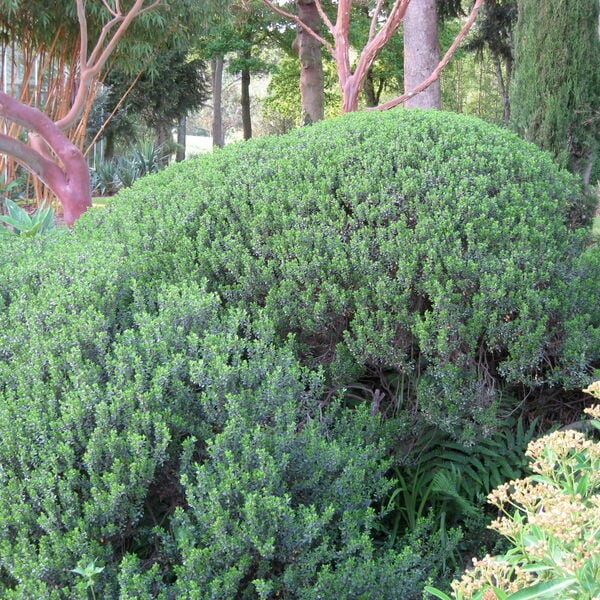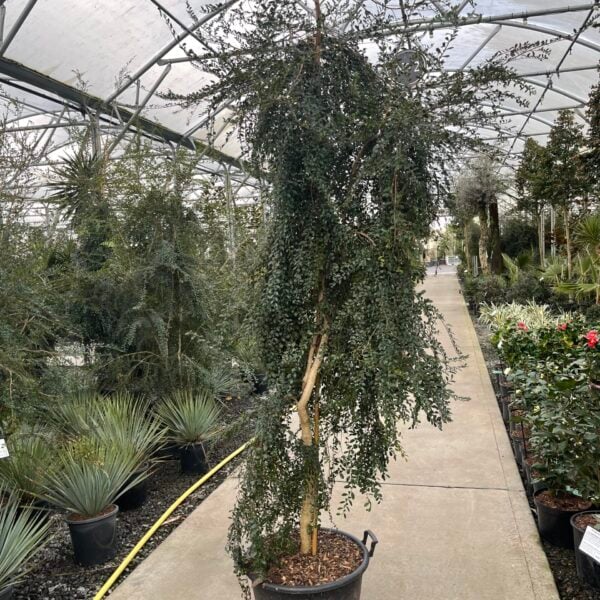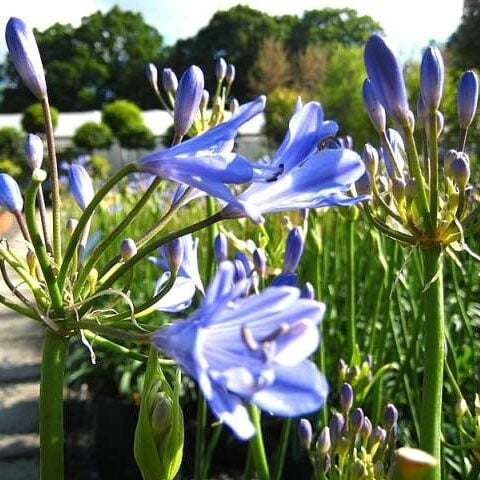Pseudopanax crassifolius (Lancewood)
From N. Z. In its juvenile state, 2ft long leaves, very thin, hanging at 45° from the trunk. Outrageous. One of our more original designs. Exotic in the extreme. To 20ft. Please contact us for stock availability and size

Hardiness level Amber
The Lancewoood has a straight and slender trunk and is from New Zealand and was presumably considered by the Maoris to be ideal for making into lances.
In the Kiwi forests it's a pioneer - one of the very first plants to colonise a new space in the woods when an opportunity arises - i.e when a 600 year old Kauri Tree falls over one stormy night, makes a space in the canopy and the first seed to germinate will be these. The Kiwi equivalent of Elder and Pussy Willow.
When young, they have a beauty and an unusual-ness unappreciated by some. The leaves are long and thin and quite sparse and the tree has no branches and the leaves are a bit brown and hang down in a droopy manner. Like the sound of it? I once overheard two customers on the nursery - one whispering to the other "Why are they selling dead plants?". Another customer once asked if we grew 'The Sea Weed Plant'. I knew exactly what he meant immediately. The leaves have a distinctly bladder wrack look about them. I also remember a French lady who, having discovered these plants on our nursery for the first time, was so excited by them that at one point she actually left the ground. So some people love them and others clearly fail to appreciate their qualities to the same extent.
They're exotic and weird and unique and need to be planted in groves and then... then... after about ten years, they metamorphosise into their adult form. At about 10ft or more, it begins to branch and the leaves change from being long (up to 3ft) and narrow (less than 1") and a bit brown, to being short (about 4") wider (about 2") and dark green and all the juvenile leaves on the trunk, fall off. A mature Lancewood still has a straight trunk (smooth and grey and sinuous) topped by a mass of leaves, giving it an almost formal look - like a giant, slightly spiky, exotic lollipop to 25ft sometimes.
Lt. James Cook and his retinue of not-always-welcome botanists (Joseph Banks and Daniel Solander etc) first arrived in what we later called New Zealand in 1769. It was many years later that it was realised that 'that' tree (the juvenile Lancewood) and 'that' tree (the adult Lancewood) were the same tree.
They're hardy enough to grow in most parts of the British Isles (in sun or shade and almost any soil) and their weirdness is emphasised by their ability to grow in a pot quite happily for a ridiculously long time. They appear to gain moisture and nourishment from thin air.
When mature they flower regularly and this is when you understand its lineage. The flowers are like Ivy and Fatsia - a mass of little white flowers in bunches. To discover that one of this extraordinary tree's closest relatives from 12,000 miles away is English Ivy, compounds its wonderful weirdness.
If you want them to branch, just cut the trunk when young and they will produce a number of new shoots from the cut.
One of the botanical wonders of the world.
In common with all Pseudopanax, it will survive happily in a pot for longer than most. This is probably associated with the fact that many of these can be found as epiphytes in their native New Zealand - or 'Perching Plants' as they call them there. These are plants growing in large trees merely surviving from whatever food and moisture they can gather from the mother plant.
Propagated by us from seed. Highly variable.
N.B. When clipping several plants with the same tool, have a bucket containing a 5% bleach solution and swish your blades around for 30 seconds between plants to sterilise them. This will help avoid the chance of cross contamination of disease.
As with all woody plants, plant high, exposing as much of the taper at the base of the trunk as possible. Allowing soil to accumulate round the base of a tree can be fatal. Keep very well watered when first planted.
Additional Information |
|
|---|---|
| Soil Type | |
| Light | |
| Plant Type | |
| Continent of Origin | |
| Specialist Plants | |
| Features | |
| Tree Size | |
| Situation | Coastal, Mild City Gardens, Plants for Pots, Sheltered Garden |
| Hardiness | |






